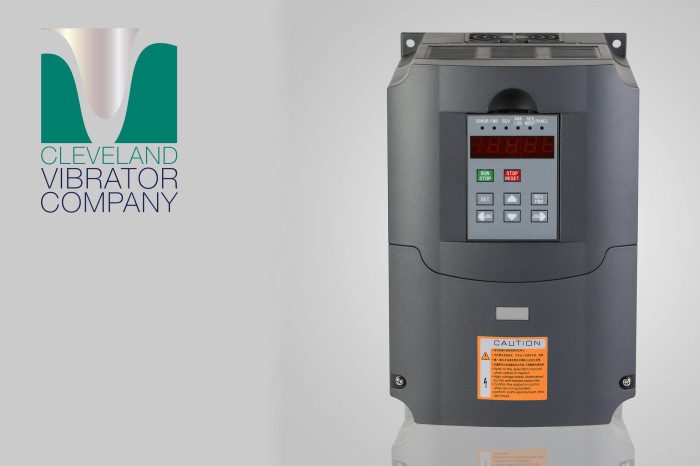Variable Frequency Drives (VFD) have become commonplace in many of our bulk material handling applications due to the adjustability they provide and the cost which has become more attractive over the years. However, I have found that many of our customers do not understand what they can achieve with this controller and how it affects acceleration when working with our electromechanically driven equipment featuring twin electric motor vibrators like our EMF vibratory feeders, EMS vibratory screeners and FA flat deck & GT grid top tables.
So we will start off with the fact that is contrary to what some might think – the lowering of the frequency does not affect the stroke being produced by the equipment. The stroke of the equipment can only be changed by mechanically adjusting the eccentric weight settings on the vibrators. Frequency adjustment affects the force output and subsequently the g’s of acceleration. The acceleration is a function of the total set force (SF) output of the vibrators divided by the vibrating weight (W) which is the sum of the weight of the vibrating body mounted on isolators + weight of the vibrators + material load.
So now you may ask yourself, can we determine the force output and ultimately the g’s when reducing the frequency from the full rated speed of the vibrating motors to a specific lower frequency? The answer is yes. The reduced force output can easily be calculated by using the following formula where CF is the centrifugal force you are trying to calculate, SF is the known force output the vibrator is set at and Hz is the cycles/second that you read out on a VFD display where 60 Hz is the full rated speed of the vibrator.
CF = SF x (Hz/60)2
For example, if SF = 1,000 lbs Force and you reduce the speed from 60 down to 48 Hz:
- CF = 1000 x (48/60)2
- = 1000 x (0.8)2
- = 1000 x 0.64
- CF = 640 lbs Force
Taking the example further to calculate the difference in g’s if the vibrating weight is 250 lbs:
- → g’s= SF/W
- With SF = 1,000 lbs Force
- = 1000/250
- = 4.0 g’s @ 60 Hz
vs. CF/W
- = 640/250
- = 2.56 g’s @ 48 Hz
In summary, reducing the frequency from 60 Hz down to 48 Hz reduced the force output of the vibrator(s) from 1,000 to 640 lbs Force and the acceleration from 4.0 to 2.56 g’s.
You now have the tools to figure out the full capability of your vibrating equipment when utilizing a VFD. Now if only the Cleveland Browns could just get the right tools i.e. management, players… At least the Cavaliers appear to be the real deal, so all is not lost!
Still need some help figuring out this equation, myself and my team are here to help!

Jack Steinbuch has been with The Cleveland Vibrator Company for over 36 years accumulatively. He has previous experience in the manufacturing industry as a Senior Application Engineer and has worn many hats on our team in sales and managerial capacities. Now, he’s in the position of General Sales Manager. With a BSCE from The University of Toledo, he is an expert in the realm of sizing vibratory screeners and feeders, and sizing vibratory drives for tables and other vibratory equipment. Understanding that customer service is crucial, Jack believes it is important to provide the proper product for every application, even if it happens to not be supplied by The Cleveland Vibrator Company.
In his off-hours, you can find Jack spending time with his family and playing with his grandchildren. He loves sports; both watching and playing, and is an avid golfer and a league bowler during the winter. He will be retiring at the end of September 2021 and hopes to spend his winters vacationing in Florida.
Follow us:
Share this blog post:



One Response to It’s Complicated, or Is It? The Frequency, Stroke & Acceleration Relationship